How to Launch Integrations and Build an Ecosystem: A Practical Guide from Partner Fleet & G2
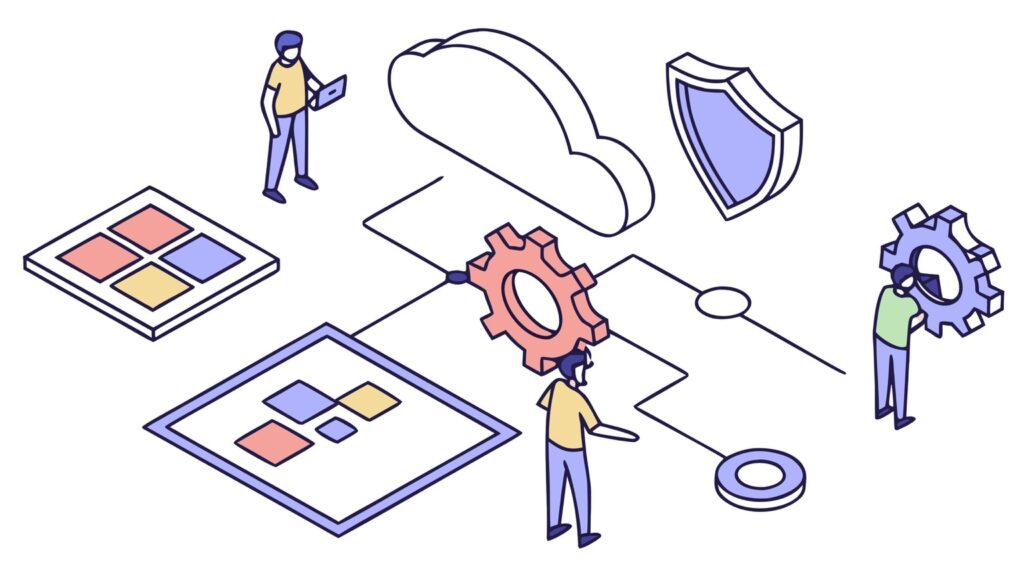
This guide was created alongside Kenny Brown (CEO of Partner Fleet) and Riley Carr (Technical Product Manager at G2). So if you’re responsible for product, partnerships, or platform strategy, you’re about to get a comprehensive, actionable roadmap for launching integrations, building a developer-friendly portal, and scaling a partner-driven ecosystem that drives growth.
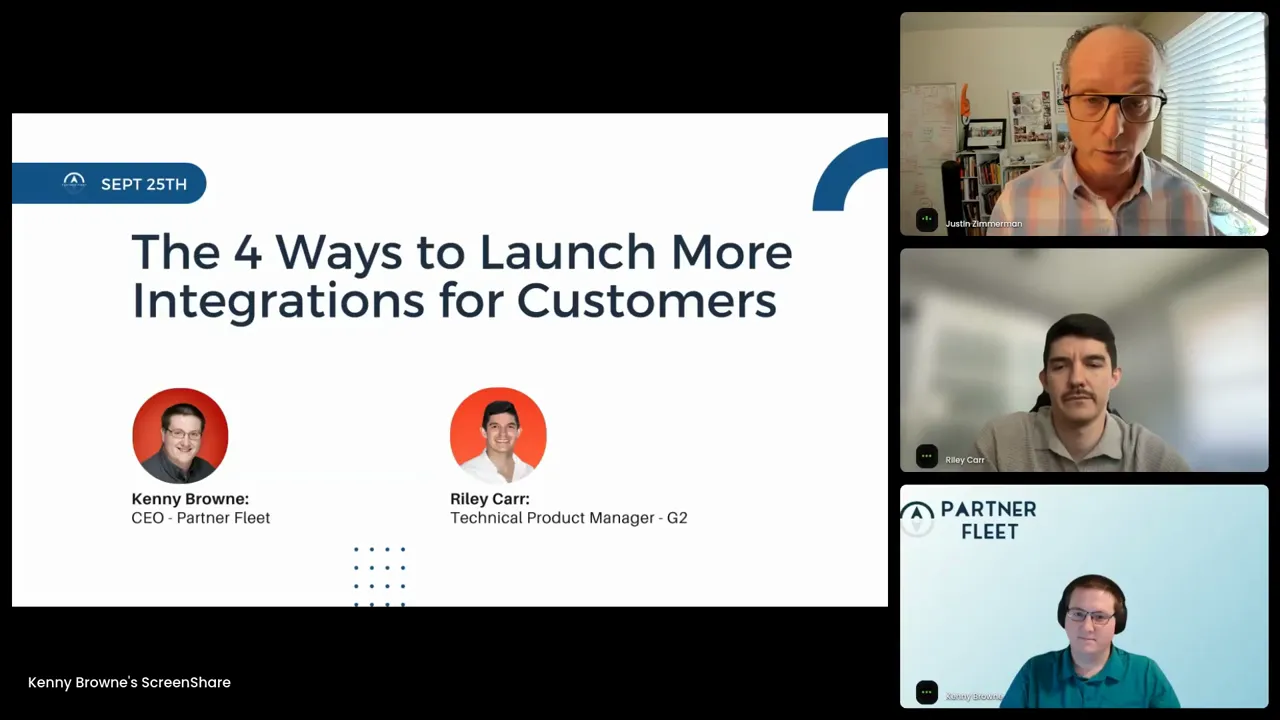
Table of Contents
- Introduction: Why you should care about integrations (right now)
- What you’ll learn in this guide
- The four pragmatic ways to launch integrations
- How to choose: a decision matrix for integrations
- From APIs to ecosystem: what it really takes
- Case study: G2’s journey from APIs to a developer portal
- Seeding the marketplace: lessons from Slack
- Infrastructure you must build (or buy) for a healthy ecosystem
- Security, legal, and risk management
- Developer experience (DX): what really speeds adoption
- Marketing your integrations: the truth about the “field of dreams”
- Measuring impact: the KPIs that matter
- Operationalizing partner applications and approvals
- How Partner Fleet and G2 solved the operational gap
- Scaling to hundreds of integrations: a playbook
- Operational checklist: what you must do in the first 90 days
- Common pitfalls and how to avoid them
- Tools and partners to consider
- Realistic expectations: what growth can look like
- Step-by-step sample implementation plan (6–12 months)
- FAQ
- Closing: The strategic opportunity
- Further resources
Introduction: Why you should care about integrations (right now)
Seventy percent of the buyer’s journey is digital. When someone on your target buying committee evaluates solutions, they aren’t just asking vendors—they’re asking peers, searching review sites, checking partner directories, and even querying AI tools. One of the top three buying criteria is whether a product fits into the buyer’s existing tech stack. For SMB and mid-market buyers, integrations can even outrank other purchasing concerns except for whether the product actually solves the problem. For enterprise buyers, integrations sit right behind security.
That’s a simple way to say what you already suspect: integrations aren’t optional. They influence whether you show up on shortlists, whether prospects move forward, and whether customers renew. Rollworks’ analysis is a headline-grabber for a reason: customers with just one integration renewed at a 30% higher rate than customers with none, and customers with four or more integrations renewed at a 135% higher rate. In plain terms: integrations increase customer retention substantially.
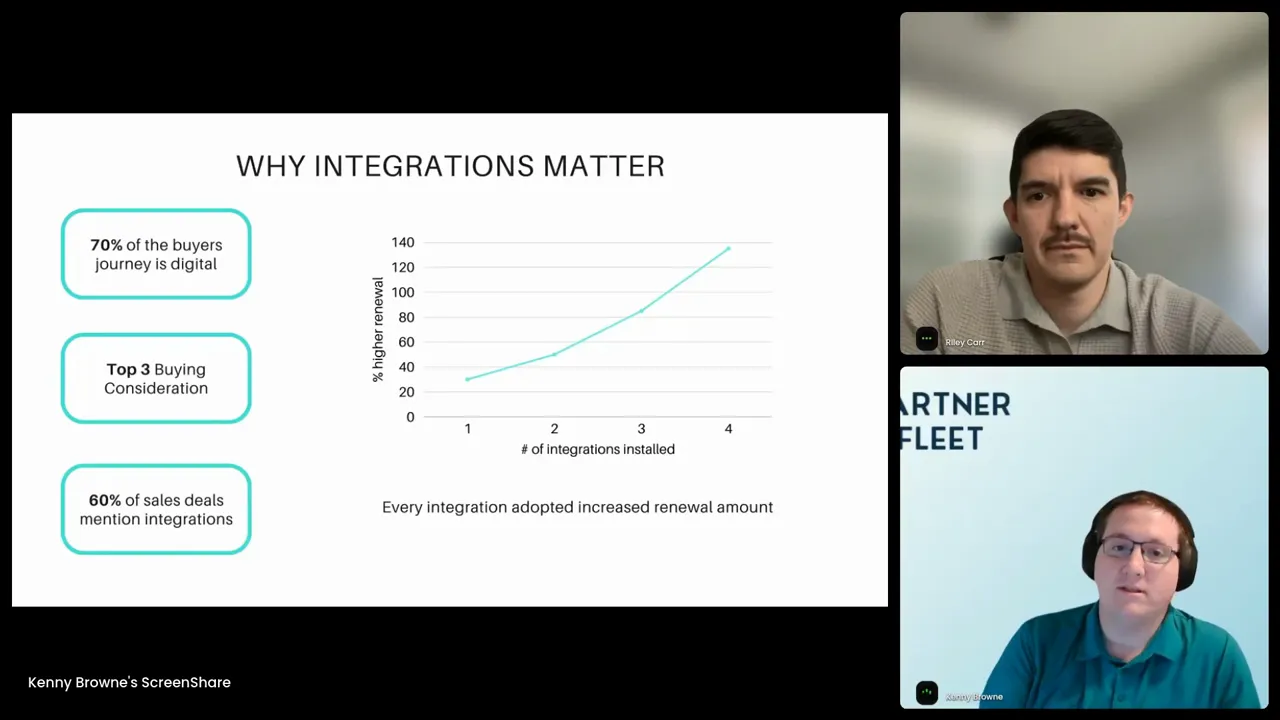
What you’ll learn in this guide
- Four pragmatic approaches to launching integrations and when to use each
- A decision matrix for prioritizing integration investments
- Why a developer portal and partner flows are essential to scale
- How to seed a marketplace and transition to partner-led growth
- Security, legal, and operational guardrails you must have
- A practical, step-by-step checklist you can follow to launch an ecosystem
- Frequently asked questions with real-world answers
The four pragmatic ways to launch integrations
There isn’t one right way to expose integrations. There are four approaches you’ll choose from depending on company size, product strategy, engineering capacity, and go-to-market goals. You’ll likely use a mix of all four across your roadmap.
1. Build integrations in-house
What it is: Your engineering team owns the integration. You design, build, ship, and maintain it yourself.
When to use it: For mission-critical, high-demand integrations that directly affect product experience or major purchase decisions—think CRMs (HubSpot, Salesforce), major data sources, or systems where your product’s value is tightly coupled to integration quality.
Pros:
- Deep, bespoke integrations tailored to your customers.
- Precise control over user experience and reliability.
- Fewer handoffs—direct ownership can reduce ambiguity in support and roadmap decisions.
Cons:
- Engineering becomes the bottleneck. The average integration takes at least three months to deliver, and a small dedicated team might realistically ship ~8 integrations per year if everything goes perfectly.
- It’s a trade-off: each integration you build is time not spent on core product features.
- Ongoing maintenance, QA, and support responsibilities fall to your team forever.
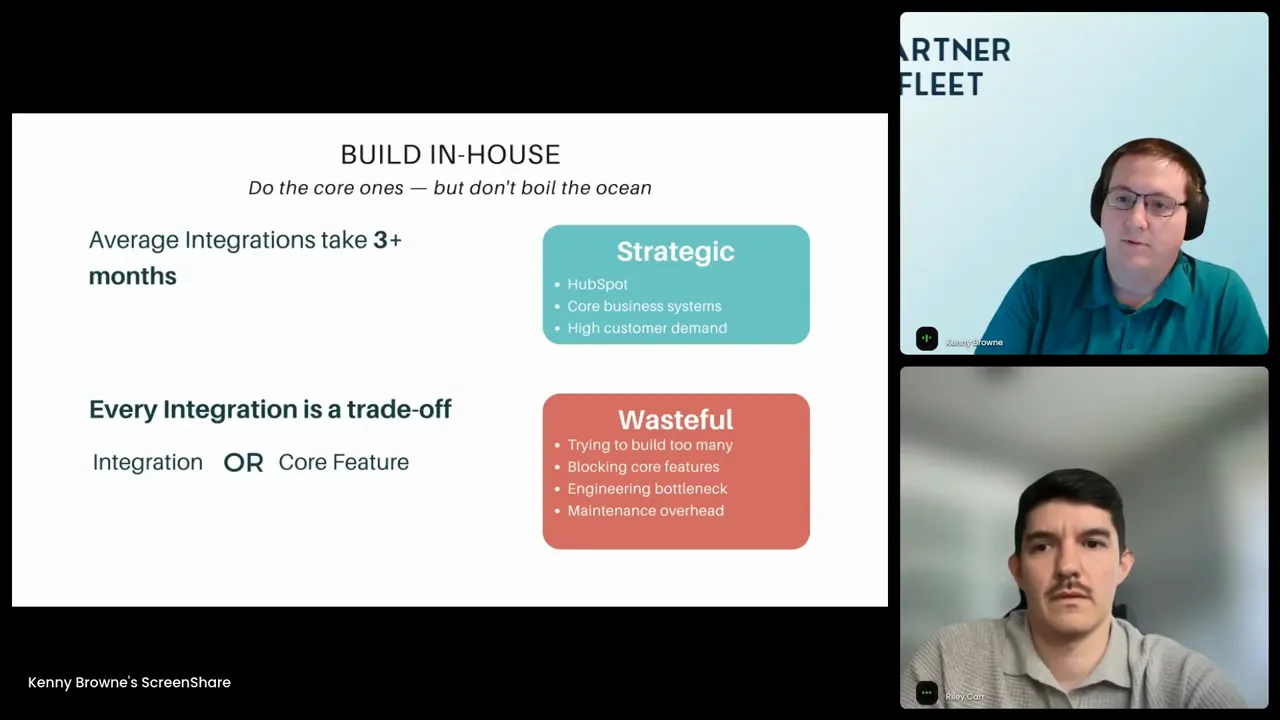
2. Use an iPaaS (Integration Platform as a Service)
What it is: You leverage middleware platforms—Zapier, Workato, Tray.io, and vertical specialists—that enable quicker, low-code or no-code connections between systems.
When to use it: When you want broad coverage quickly and without deep engineering investment, but the integrations don’t require heavy customization or deep sync logic.
Pros:
- Faster time to market for simpler integrations.
- Lower upfront engineering effort and easier maintainability for straightforward use cases.
- Good for scaling to mid-level coverage of popular systems.
Cons:
- These integrations tend to be shallow and transactional—perfect for passing records back and forth, less ideal for deep experiences.
- Many teams overestimate how many integrations iPaaS will deliver. In practice, companies often launch 5–10 integrations that serve a handful of customers each—not the hundred-plus catalog they envisioned.
- You still may need engineering support for complex transforms or custom behaviors.
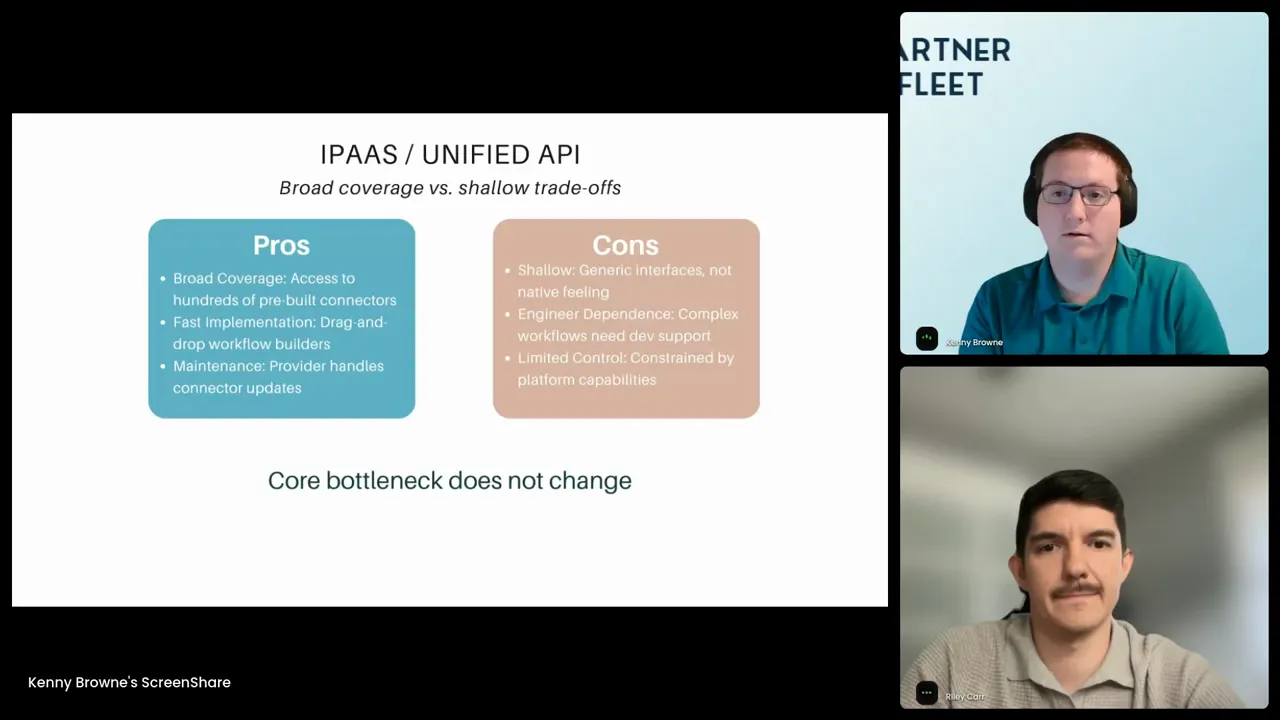
3. Expose APIs and enable DIY integrations
What it is: You publish APIs, documentation, and sandbox data so customers and partner developers can build directly on your platform.
When to use it: When your product is stable, you want partners to extend your features, and you’re ready to open up programmatic access in a controlled manner.
Pros:
- Enables customers and partners to build exactly what they need.
- Moves many integration costs off your engineering team, while creating an ecosystem of add-ons that can amplify product value.
- Foundation for partner-led growth and marketplace models.
Cons:
- “If you build it, they will come” is a myth. You’ll have to market your APIs, manage security and terms, and provide tooling and onboarding.
- Developer experience matters—API docs alone are rarely enough.
- You’ll need submission, approval, and legal review flows to keep the program safe at scale.
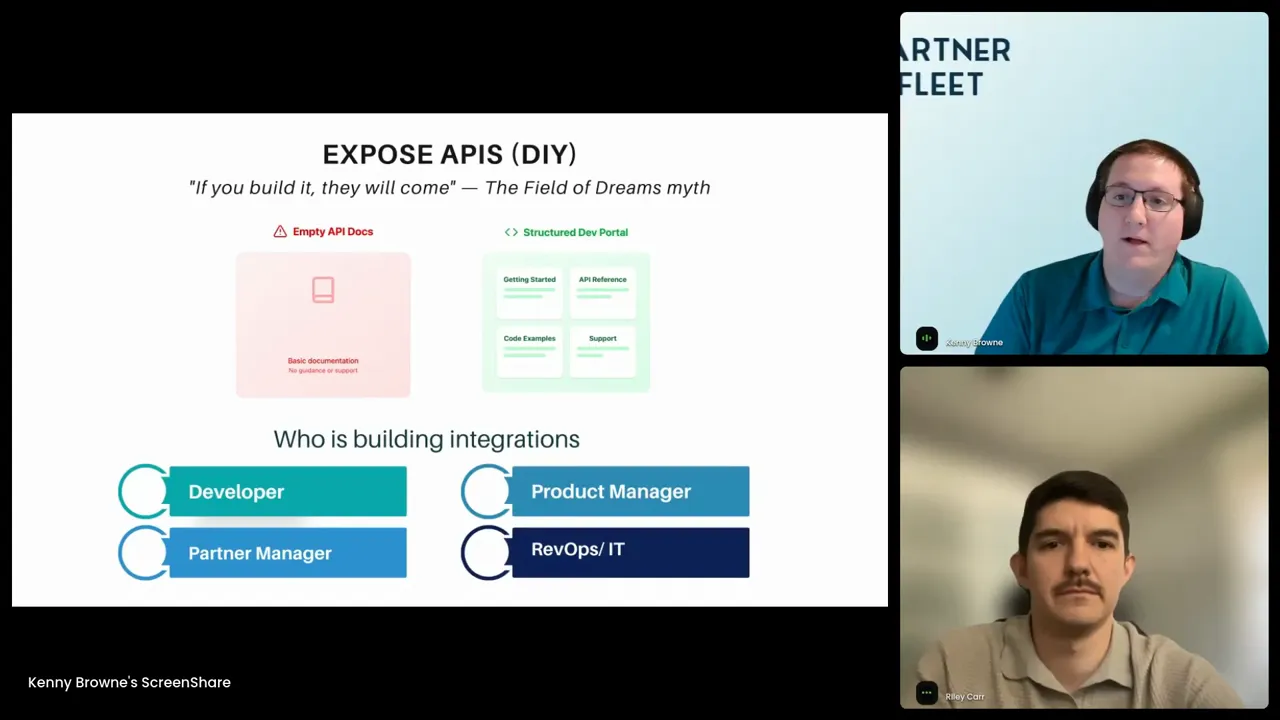
4. Create a full open ecosystem (partner-driven)
What it is: You treat your ecosystem as a product. You provide developer portals, app submission and review, marketplace discovery, partner programs, legal contracts, analytics, and co-marketing supports so third parties build and market integrations that extend your platform.
When to use it: When you want to unlock exponential value via partners, scale integration coverage fast, and build a flywheel of partner-driven growth.
Pros:
- Once functioning, ecosystems create powerful network effects. More partners -> more customers -> more partner interest.
- Leverage partner development teams to create hundreds or thousands of integrations you couldn’t build alone.
- Creates a marketplace that influences the digital buyer journey—showing prospect compatibility and increasing conversion.
Cons:
- Requires investment in infrastructure, operations, and governance.
- You’ll need to build a developer portal, submission and review systems, and reporting to measure impact.
- Risk management (security, data privacy) becomes central.
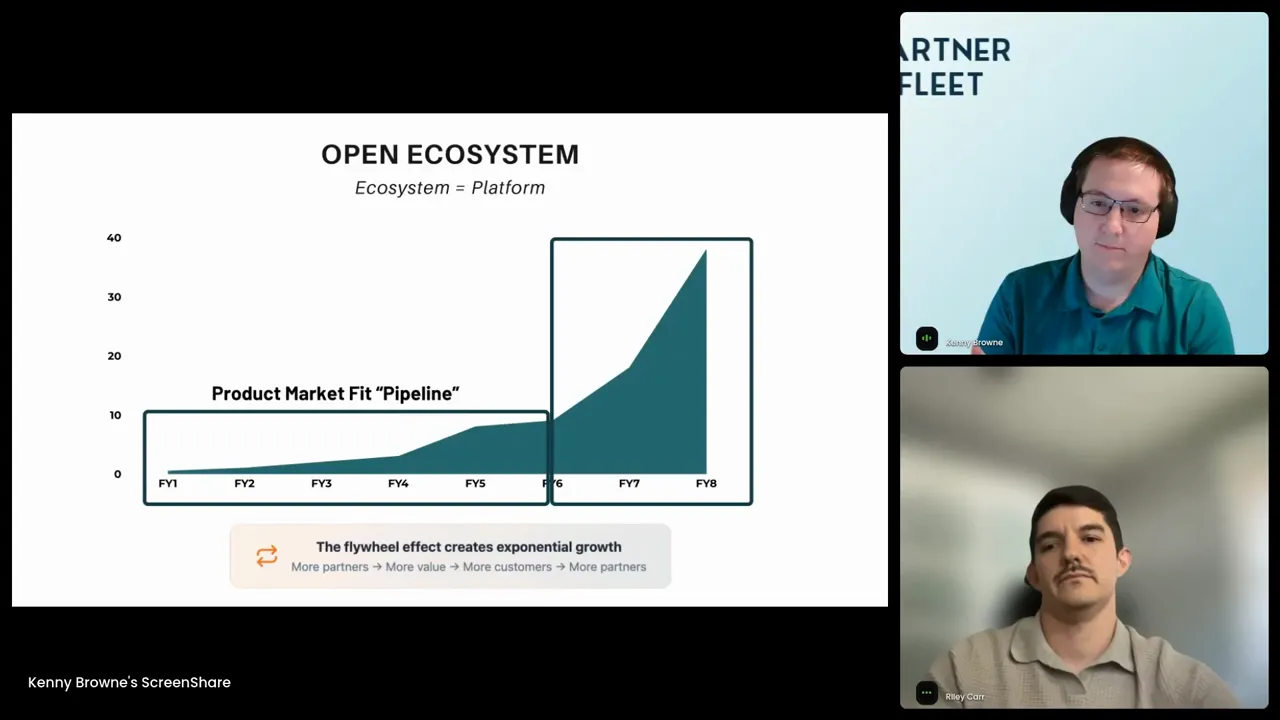
How to choose: a decision matrix for integrations
Choosing between the four strategies is not binary. Use a decision framework mapped to two axes: value (impact on your product and customers) and demand (how many customers want it). This will help you decide who should build each integration.
- High value & high demand: Build in-house. Example: HubSpot or Salesforce CRM integrations—these can make or break your product experience.
- High value & low demand: Consider iPaaS or a prioritized in-house build if the integration opens strategic markets.
- Low value & high demand: iPaaS or partner-built solutions make sense here to reduce your engineering burden.
- Low value & low demand: Open up APIs and let partners or customers make their own decision to build.
Remember: partners rarely have the same decision matrix you do. Something that is low priority for you may be a strategic play for a partner. When that happens, you can benefit from their investment if you make it easy for them to build on your platform.
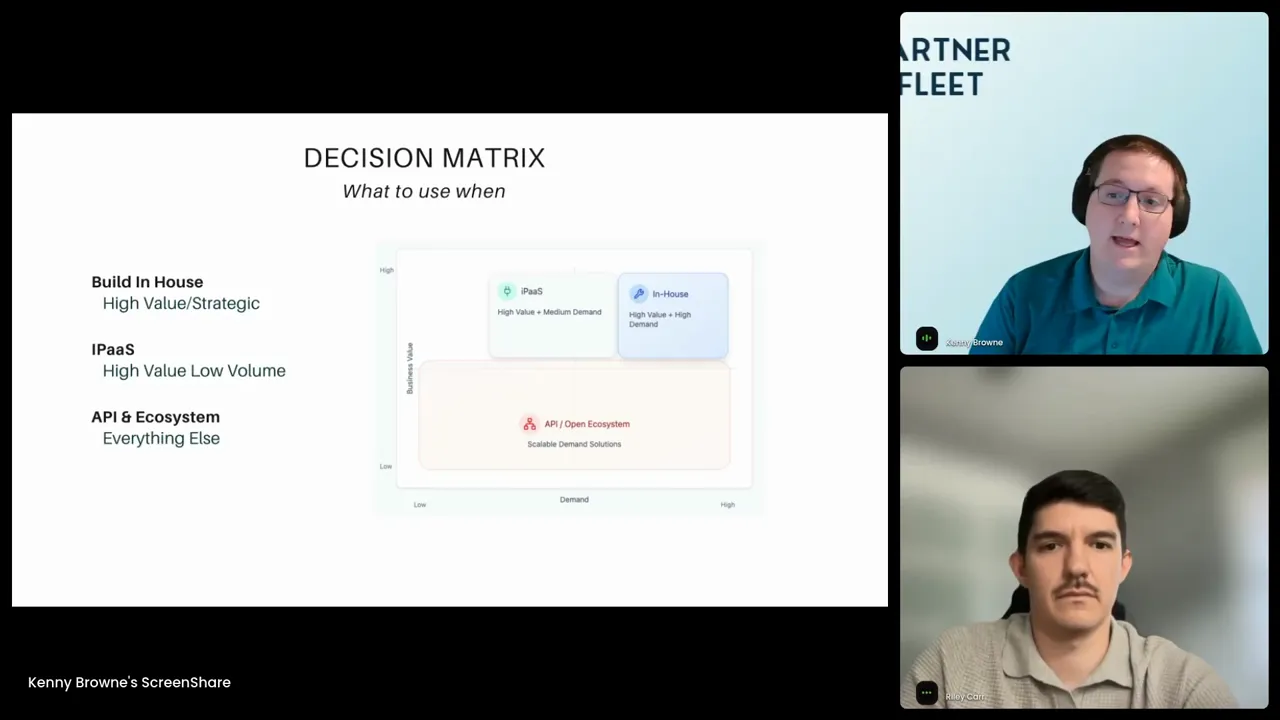
From APIs to ecosystem: what it really takes
Publishing APIs is only step one. If your objective is to scale integrations into a self-sustaining ecosystem, you must treat the ecosystem as its own product. That means designing an end-to-end flow for developer and partner journeys and building the infrastructure to support it.
Here’s the typical developer/partner journey you must design:
- Discovery: A developer or partner learns your platform can integrate with systems they care about.
- Sign-up: They register an organization and create API tokens or OAuth apps.
- Onboarding: Provide sample code, SDKs, sandbox data, and walkthroughs so they can make their first API call in minutes rather than days.
- Build & test: Enable testing using specific sandbox data and a QA process.
- Submit & review: Accept app submissions, run security reviews, confirm data use and terms, and approve integrations.
- Publish & list: Add the integration to a marketplace or integrations tab for customers to discover.
- Monitor & support: Provide ongoing support, QA checks, monitoring, and versioning governance.
- Measure & optimize: Track install rates, attach rates, renewal impact, and partner performance.
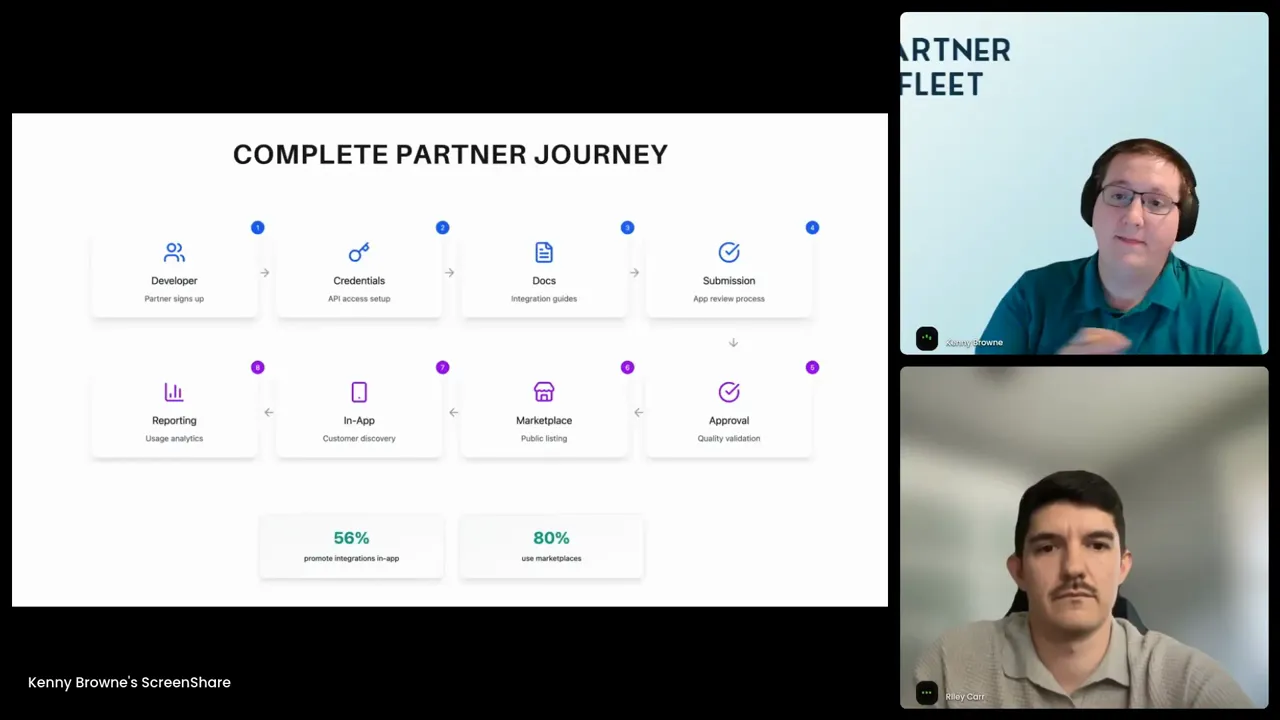
Why just API docs are not enough
Many companies stop at the “we have API docs” milestone. The problem is that APIs touch many stakeholders beyond developers. Product managers, partnership teams, legal, security, RevOps, and customer success will all participate in evaluating and enabling integrations. If your program only solves the developer’s immediate needs, you’ll miss the operational and business requirements that make integrations safe, discoverable, and valuable.
To scale, you need:
- A self-service developer portal with onboarding flows and sample code across languages
- Sandbox environments and test data so partners can validate end-to-end behavior
- App submission and legal review workflows with clear SLAs and acceptance criteria
- Discovery surfaces: a marketplace, an integration tab in your product, and public listings partners can use in their marketing
- Analytics: install rates, active usage, customer attach, and revenue attribution
- Monitoring and maintenance processes so partner apps don’t break customer experiences
Case study: G2’s journey from APIs to a developer portal
G2’s journey illustrates how a product can evolve into an open ecosystem with the right investments. When G2 began, partners could integrate but the process was manual, resource-intensive, and slow. Tokens were shared manually, documentation was a support ticket away, and getting access to APIs could take weeks.
The goals were clear: automate partner onboarding, reduce time to first API call, and create a self-service path that allowed partners to see and test all available capabilities without engaging internal resources. G2 built a developer portal where partners can create an organization, spin up API tokens, register OAuth apps, and begin testing immediately. They also created sample code in multiple languages and sandbox data that mirrors production functional flows.
To manage the partner lifecycle beyond developer onboarding, G2 partnered with Partner Fleet to handle submission, approval, legal review, and listing in the marketplace. That partnership enabled G2 to keep development focused on data availability, documentation, and developer experience while outsourcing the operational workflow that partners need to become licensed marketplace integrations.
G2’s new model is called “G2 Everywhere”—emphasizing data availability broadly across customers and partners. They now have around 50 partner integrations and aim to double that within a year. Building the portal dramatically shortened time-to-value for partners and improved feedback loops for documentation and tooling.
Seeding the marketplace: lessons from Slack
Slack is an instructive example of how to seed a marketplace. Before fully opening the platform to partners, you’ll likely need to seed the marketplace with a set of high-quality integrations to create utility and encourage others to join.
Slack built roughly 80 integrations in-house and with iPaaS partners before opening the platform for partner-led contributions. That initial investment made the marketplace useful, which attracted more partners. Once partners saw value (users, installs, and real usage), the transition to partner-led growth accelerated, moving Slack from dozens of integrations to hundreds and then thousands.
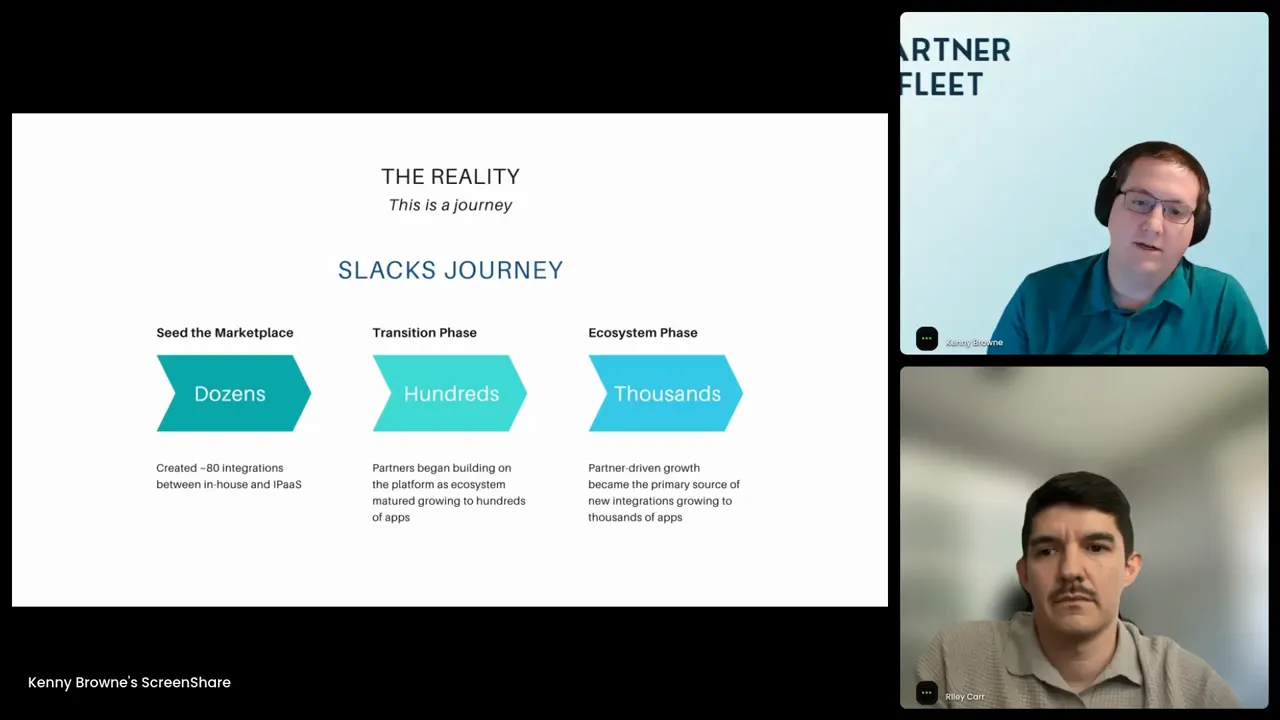
What you can learn from Slack:
- Seed the marketplace with critical integrations to make it valuable early.
- Treat the ecosystem as its own product with a roadmap, KPIs, and dedicated ownership.
- Use seeding to prove value to internal stakeholders and the executive team before scaling.
Infrastructure you must build (or buy) for a healthy ecosystem
An open ecosystem isn’t just APIs. At minimum, you need:
- A developer portal with onboarding, tokens, and sample code
- Sandbox environments and sample data
- An app submission, review, and legal approval workflow
- A discoverability layer: marketplace, integrations listing, product-level toggle/enablement
- Monitoring and lifecycle management for partner apps
- Analytics and reporting to measure partner value and customer attach
- Support and escalation processes for partner-built integrations
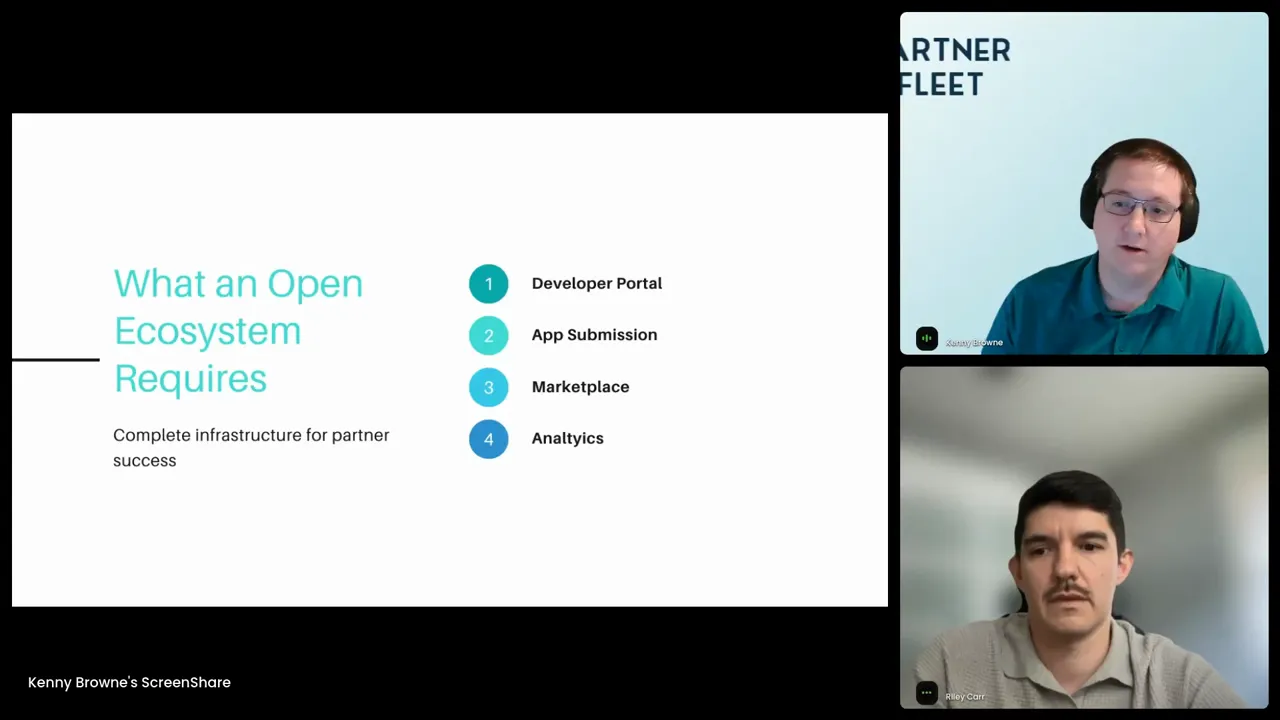
Role alignment and sponsorship
For this infrastructure to exist and operate, you will need cross-functional sponsorship. Product, engineering, partnerships, legal, security, RevOps, and executive leadership must be aligned. This is rarely a successful grassroots initiative—your senior leadership should treat platform strategy as a product with a charter, KPIs, and budget.
Security, legal, and risk management
Integrations increase your attack surface. Partners may request API keys, have access to customer data, and introduce risk if security controls are lax. A recent industry incident—where a partner accidentally exposed an API key—reminds you how quickly data exposure can affect your customers and brand if you don’t have review processes in place.
Do not underestimate legal and security review:
- Require partner terms and data usage consent for any app in your marketplace.
- Automate initial vulnerability scanning and require security attestations for production-ready apps.
- Maintain a secure token lifecycle and avoid practices like sharing tokens via email or support tickets.
- Implement monitoring for abnormal usage patterns and revoke tokens with a clear remediation path.
- Document data flows and enforce least-privilege access for app tokens and scopes.
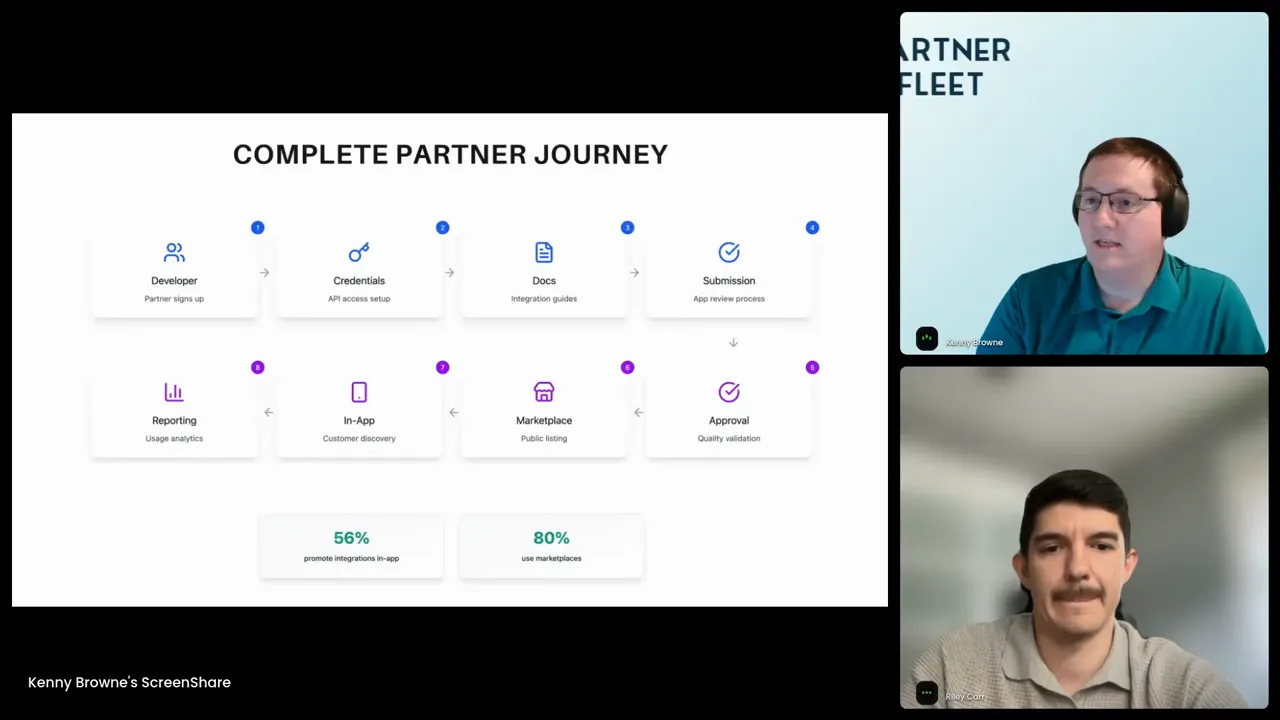
Developer experience (DX): what really speeds adoption
Developers have choices. If the first API call takes hours instead of minutes, they will likely choose another route. Great DX reduces friction and encourages partners to stick with your platform.
High-impact DX features:
- Instant API access: register your organization and generate tokens without a human in the loop.
- Sample code in several languages that covers common use cases and demonstrates best practices.
- Sandbox data that mirrors real-world scenarios—so partners can test edge cases.
- Clear error messages, versioning strategy, and migration guides for breaking changes.
- SDKs and client libraries to simplify authentication and API workflows.
Marketing your integrations: the truth about the “field of dreams”
The field of dreams myth—”if you build it they will come”—is dangerous. You must market integrations actively. That means routed campaigns, co-marketing with partners, marketplace optimization, and buyer-focused discovery content.
Good practices:
- Create integration pages that show not just function but value: What problem does the integration solve? Use case examples and customer testimonials matter.
- Enable partners to use logos and marketplace listings in their outbound campaigns.
- Surface integrations where buyers discover products: review sites, product comparisons, and your own product UI’s integration tab.
- Promote top integrations in your sales enablement content and onboard new customers with recommended integration bundles.
Measuring impact: the KPIs that matter
There are dozens of metrics you can collect. Focus on the ones that show whether integrations create real customer and business value.
- Install rate: How many customers enable each integration?
- Active usage: Are installed integrations actually being used?
- Customer attach rate: What percentage of customers have at least one integration?
- Renewal & churn uplift: What is the difference in renewal rates between customers with integrations and those without? (Remember Rollworks’ data.)
- Time-to-first-API-call: A DX metric—lower is better.
- Partner pipeline and attribution: Which partners drive new business or expansion?
- Support & maintenance overhead: Cost to support partner integrations.
Operationalizing partner applications and approvals
To scale, you’ll need a repeatable process for partner app submissions, reviews, and approvals. Don’t make this one-off and manual—design it as a workflow with clear gates.
Suggested steps for app approval:
- Pre-screening: automated checks for required fields, privacy policy, and basic security posture.
- Developer review: confirm API usage patterns, scopes, and sandbox testing results.
- Security & legal review: verify data handling, encryption, and contract terms.
- UX review: ensure the integration’s user-facing experience meets minimum quality guidelines.
- Release gating: allow a beta release to a subset of customers, collect feedback and telemetry.
- Final approval and listing: publish in the marketplace with partner metadata and co-marketing assets.
- Ongoing monitoring: periodic QA, telemetry checks, and required remediation timelines.
How Partner Fleet and G2 solved the operational gap
G2 prioritized making its data broadly available through the “G2 Everywhere” initiative. The developer portal enabled self-service API access, token creation, and SDKs, and provided sandbox environments and sample code. However, the company recognized the operational gap: building an internal partner application and governance flow was challenging and distracted from their core focus of data availability.
Partner Fleet stepped in to manage the partner application, legal review, and marketplace onboarding. The combined approach allowed G2 to focus on data and developer experience while Partner Fleet handled the submission workflow and governance. This is a model you should consider: build the developer experience and data availability in-house, but partner for specialized operational workflows if you lack bandwidth.
Scaling to hundreds of integrations: a playbook
If you want to move from a few integrations to hundreds or thousands, follow this multi-phase playbook:
Phase 1: Seed & Prove
- Build the most strategic integrations in-house (CRMs, core data flows).
- Use iPaaS partners for mid-priority integrations to increase coverage quickly.
- Create a basic developer portal with API keys and docs.
- Measure attach and retention uplift to prove ROI.
Phase 2: Open & Enable
- Launch a robust developer portal with sample code, SDKs, and sandbox data.
- Implement app submission and legal review workflows (you can buy/manage this).
- Seed the marketplace with high-quality integrations and publish use-case focused content.
Phase 3: Partner-Led Expansion
- Transition to a partner-driven model: incentivize partners, provide co-marketing, and publish APIs and SDKs that make integration fast.
- Focus on partner success: dedicated partner managers, enablement kits, and go-to-market playbooks.
- Continuously monitor and QA partner integrations at scale and require security attestations for production listings.
Phase 4: Optimize & Monetize
- Use analytics to optimize the marketplace and highlight top-performing integrations.
- Consider monetization strategies (featured listings, certification programs, revenue share) if aligned to your business model.
- Invest in automation for governance, QA, and reporting to reduce manual overhead.
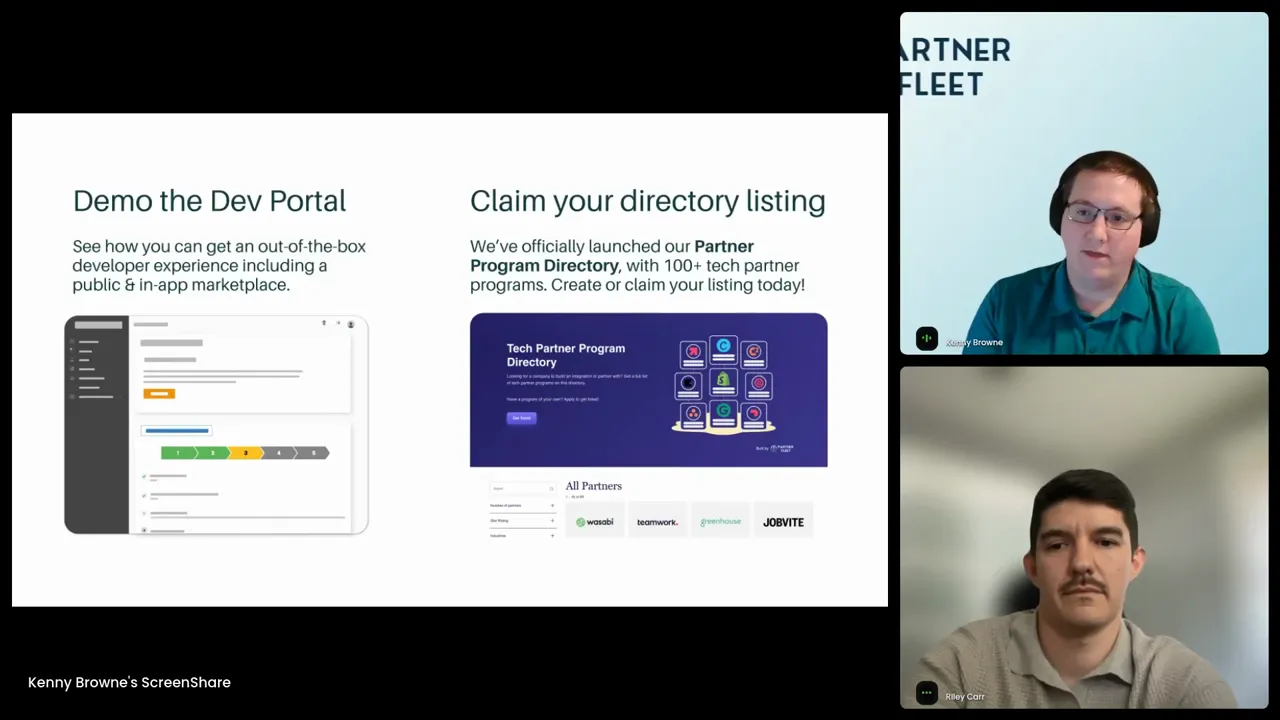
Operational checklist: what you must do in the first 90 days
If you’re starting today, here’s a prioritized 90-day checklist you can follow to create momentum:
- Define your integration strategy and obtain executive sponsorship.
- Identify the 3–5 integrations that will move the needle (high value, high demand).
- Decide which to build in-house and which to accelerate with iPaaS partners.
- Launch a basic developer portal with API token generation and documentation.
- Create sandbox data and sample code for your highest impact endpoints.
- Design a partner application and approval flow, even if manual to start.
- Publish 3–5 high-quality integrations in a marketplace or discovery listing.
- Track install, attach, and time-to-first-API-call. Iterate on the developer experience.
- Create a go-to-market plan with partner-led campaigns and co-marketing assets.
- Set a roadmap to automate the submission and approval process in the next 6–12 months.
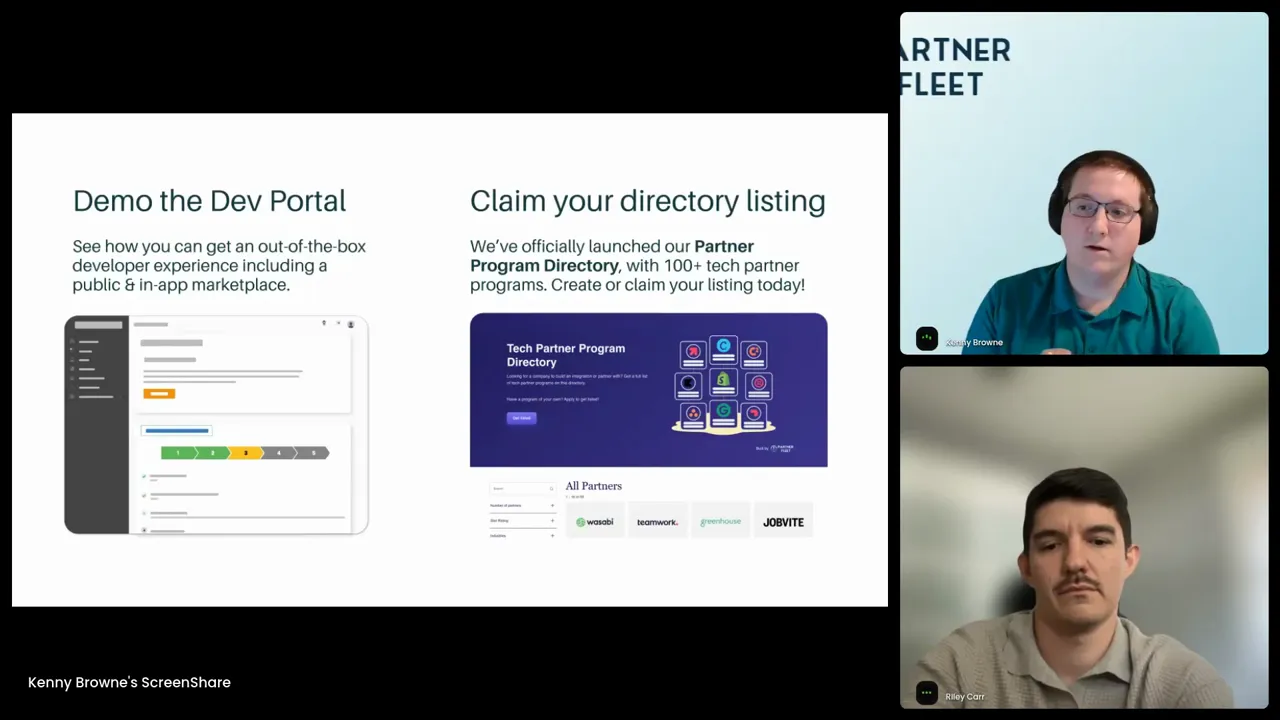
Common pitfalls and how to avoid them
Many teams fail because they either underinvest in governance or over-commit engineering resources without a clear ROI. Below are the most frequent pitfalls and recommended mitigations.
Pitfall: You publish APIs but no one builds
Mitigation: Improve developer experience, create strong sandbox data and sample code, incentivize partners, and publicize the APIs in partner communities. Create a direct path to product discovery for buyers by listing integrations where prospects research your product.
Pitfall: Marketplace lacks early value
Mitigation: Seed it with essential integrations (build or buy) to make the marketplace useful from day one, and then open to partners.
Pitfall: Security incidents from partner apps
Mitigation: Enforce legal agreements, automate security scanning, require least privilege tokens, and build monitoring and incident response into the operational plan.
Pitfall: Engineering overload and maintenance debt
Mitigation: Use iPaaS for non-differentiated integrations, enable partner-built solutions for low-value requests, and create clear SLAs and lifecycle policies for your in-house integrations.
Tools and partners to consider
Depending on your needs, here are practical categories of tools and example vendors you should evaluate. Choose based on your scale, vertical, and developer needs.
- Developer portals & API management: Postman, ReadMe, Kong, AWS API Gateway
- iPaaS & middleware: Zapier, Workato, Tray.io, Make
- Partner operations & app submission: Partner Fleet (for governance and directory workflows)
- Monitoring & observability: Datadog, Sentry, New Relic
- Security & vulnerability scanning: Snyk, Veracode, OWASP tools
- Marketplace & discovery: Build in-product listings and integrate with review platforms like G2
Realistic expectations: what growth can look like
Transitioning to an ecosystem is a multi-year journey. Expect linear growth initially, then an inflection point once partner-driven activity begins to compound. Companies that treat the ecosystem as a product, invest in developer experience, and seed their marketplaces typically see a sustained acceleration in growth once the flywheel begins.
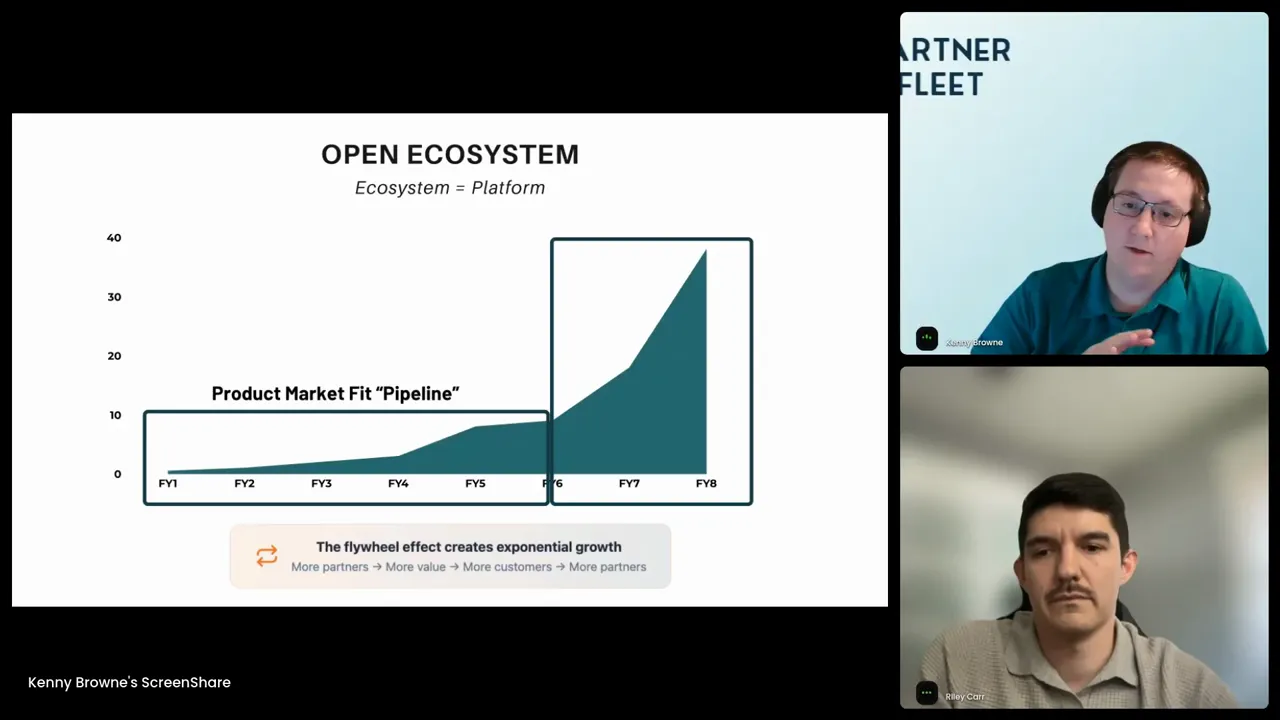
Step-by-step sample implementation plan (6–12 months)
Below is a sample roadmap for a 6–12 month rollout to move from limited integrations to a scalable ecosystem.
Months 0–3
- Secure executive buy-in and form a cross-functional core team.
- Prioritize initial integrations and choose build vs. buy.
- Launch a minimal developer portal: token creation, docs, and sample code.
- Seed the marketplace with 3–10 strategic integrations.
- Implement basic analytics for tracking installs and usage.
Months 3–6
- Expand developer portal with SDKs, OAuth flows, and sandbox data.
- Implement a structured partner application process (manual or via a partner).
- Begin onboarding design partners to test workflows and gather feedback.
- Run co-marketing pilots with seeded partners and measure outcomes.
Months 6–12
- Automate the submission and review workflow (or outsource to a trusted partner).
- Scale partner onboarding—target doubling of partner integrations.
- Standardize security and legal requirements for production apps.
- Develop monetization or certification programs if applicable.
- Improve analytics and attribution to tie integrations to revenue and renewals.
FAQ
Q: How do I decide which integrations to build in-house vs. outsource?
A: Use the decision matrix: prioritize integrations that are high value and high demand for in-house builds. For high value but low demand or mid-value high-demand integrations, consider iPaaS. For everything else, open APIs and partner-built solutions are usually the most efficient route.
Q: How do I get my partners to actually build integrations?
A: Make it low friction: provide a developer portal, SDKs, sandbox data, and sample code. Provide clear business incentives—joint marketing, leads, or product placements. Reach out to potential design partners and offer co-development and launch support to demonstrate early value.
Q: What security practices should I enforce on partner apps?
A: Require secure token handling, least-privilege scopes, encrypted transport, vulnerability scanning for published apps, and incident response SLAs. Make legal agreements mandatory before production access and implement monitoring for anomalous activity.
Q: Can I rely entirely on an iPaaS partner?
A: Not usually. iPaaS is powerful for certain classes of integrations but tends to produce shallower integrations. Use it as a tool in your toolbox, not the entire strategy. For strategic, high-impact integrations, in-house ownership or partner-built deep integrations are better.
Q: How do I measure the ROI of building an ecosystem?
A: Track customer attach rates, renewal uplift, active usage of integrations, partner-driven pipeline and revenue attribution, and the time-to-first-API-call. Combine qualitative feedback with quantitative KPIs to determine value.
Q: How long before I see measurable benefits?
A: You can show early benefits in 3–6 months if you seed the marketplace with strategic integrations and optimize developer onboarding. The full flywheel effect typically takes 12–36 months depending on your vertical and partner ecosystem.
Q: Should I charge partners for marketplace listing?
A: It depends on your business model. Many marketplaces start free to grow listings and usage, and later introduce premium features like featured listings, certifications, or revenue-sharing models. Prioritize adoption first; monetize once you’ve demonstrated value to partners.
Q: What’s the minimum viable ecosystem?
A: A developer portal that allows token creation and API access, 3–5 seeded integrations that demonstrate value, a basic app submission form and review checklist, and a marketplace listing or integrations tab in-product. This gives you a testable product for early partners.
Closing: The strategic opportunity
If you make integrations easy to find, adopt, and use—for both humans and AI—you position yourself to own the next wave of SaaS value. Integrations influence buying decisions, increase renewal rates, and enable partner-driven expansion. Treat your ecosystem as a product: prioritize developer experience, invest in operational workflows, and seed your marketplace to demonstrate early value.
Whether you’re a product team wrestling with which integrations to prioritize, a partnerships leader trying to scale co-developments, or an executive evaluating platform strategy, this playbook gives you a practical path forward. Start with the highest-impact integrations, build a strong self-service developer experience, and put governance and go-to-market behind the program. The result: a flywheel that compounds partner value and accelerates growth.
If you want a demo of the full developer and partner flow—everything from sign-up to listing and monitoring—reach out to Partner Fleet for a walkthrough. You can also explore G2’s developer portal to see a real example of self-service onboarding, sandbox data, and API tooling in action.
Further resources
- State of SaaS Integrations 2025: a research report covering trends and benchmarks
- HubSpot & IDC resources about partnerships and AI adoption
- Partner program directories where you can claim your company and discover other programs
Start small, think big, and treat the ecosystem as a product. The ROI on integrations is not just technical—it’s strategic, financial, and transformational for your company’s growth. Build in ways that scale, measure what matters, and prioritize safety and discoverability. The next wave of SaaS winners will be those who make integrations irresistible to both developers and buyers.